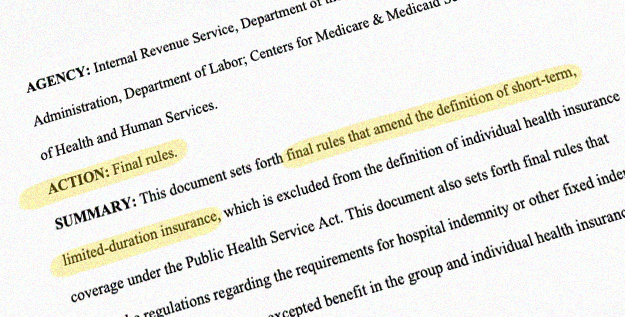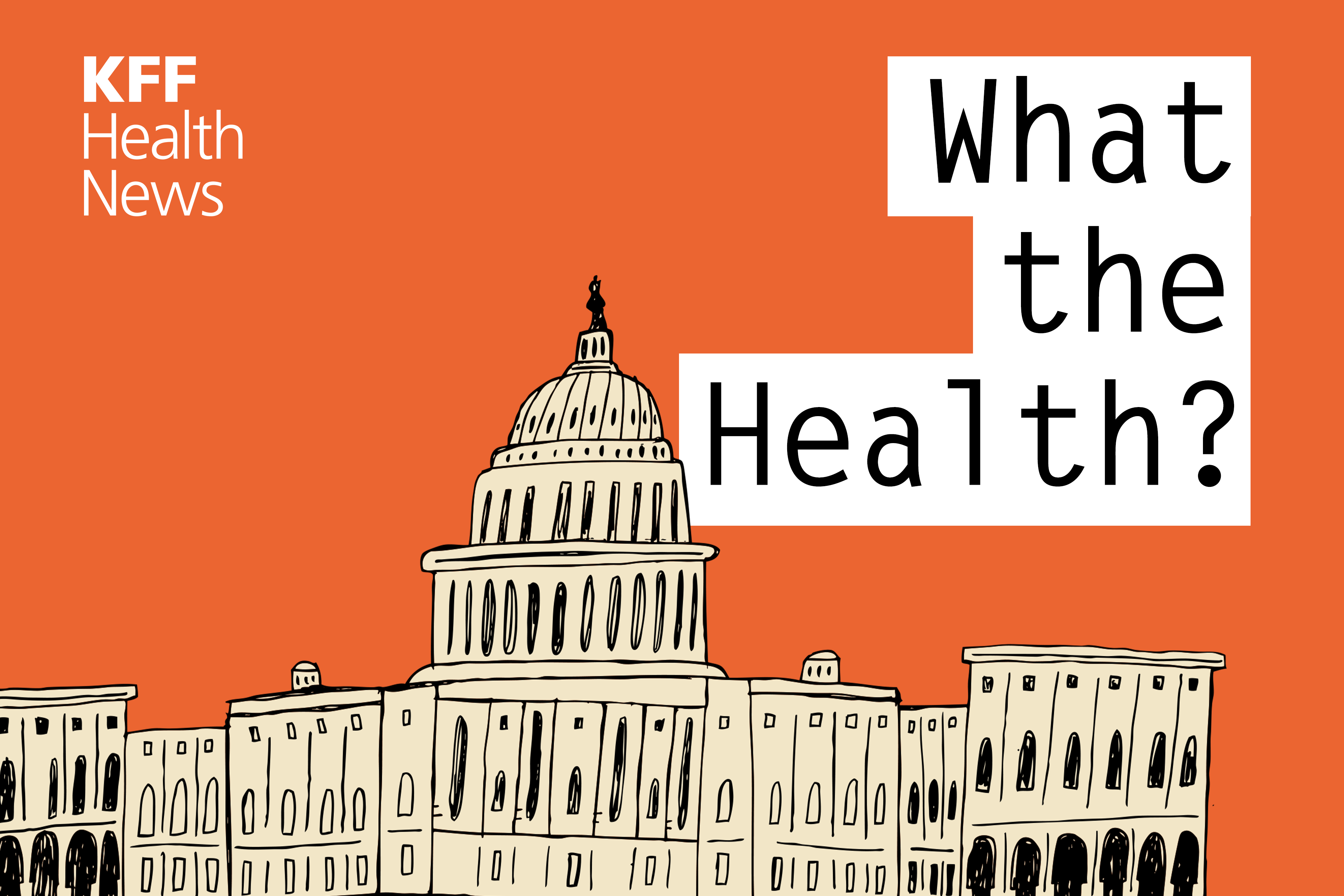A finalized federal rule announced by the Departments of Treasury, Health and Human Services, and Labor on March 28, will impose new nationwide duration limits on short-term limited duration insurance (STLDI) plans.
The rule – which applies to plans sold or issued on or after September 1, 2024 – will limit STLDI plans to three-month terms, and to total duration including renewals of no more than four months.
A “renewal” will include a new policy issued by the same insurer (or another insurer in the same controlled group, meaning they’re treated as a single employer)) within 12 months of the effective date of the first policy. So a person will not be able to purchase multiple consecutive policies – a practice known as “stacking” – from the same insurer or an affiliated insurer. The part of the rule helps to avoid scenarios in which consumers enroll in multiple STLDI policies without realizing that it isn’t comprehensive coverage.
Why did the federal government implement this rule?
As the author has previously noted, the changes are designed to ensure that short-term coverage is used to fill a temporary gap between two comprehensive policies, rather than serving as a long-term coverage solution. Since STLDI is “excluded from the definition of individual health insurance” and is thus not regulated by federal rules such as the Affordable Care Act, the No Surprises Act, the Mental Health Parity and Addiction Equity Act, etc., the federal-level consumer protections for STLDI enrollees are limited.
The rule is also intended to make it easier for consumers to distinguish between ACA-compliant individual/family health insurance and STDLI and thus reduce the number of people who inadvertently purchase short-term coverage when trying to buy comprehensive coverage.
STLDI plans sold on or after Sept. 1, 2024 will need to include an updated and comprehensive disclosure notice that highlights the major differences between STLDI and ACA-compliant individual/family health insurance sold through the Marketplace.
The disclosure, which is illustrated on page 102 of the final rule, must be displayed on the first page of the policy/contract and any associated marketing or enrollment materials.
How does the rule affect STLDI plans currently in effect?
Under the new rules, there is no change to STLDI policies that are already in effect, or policies that are sold and issued before Sept. 1, 2024. The current rules continue to apply to those policies.
This means policy durations of plans that are sold and issued prior to Sept. 1, 2024 are up to the states and the insurers as long as the policies don’t have initial terms of more than 364 days or total duration of more than 36 months.
How will state regulations be affected by the rule?
As has been the case with previous federal rules for STLDI, states can impose stricter rules but not more lenient rules regarding STLDI duration.
So for example, a state will be able to limit STLDI to a duration of under four months (or ban them altogether, as some states have already done) or prohibit the sale of a second STLDI policy within 12 months – even if it’s issued by a different insurer.[footnote “States Step Up to Protect Insurance Markets and Consumers from Short-Term Health Plans” Commonwealth Fund. May 2, 2019]
In most of the country, current STLDI duration limits vary from six months up to the maximum 36 months allowed under current federal rules. STLDI plans sold in those states will have to come into compliance with the new federal rules starting with plans issued on or after Sept. 1, 2024.
Short-term health plans are currently unavailable in 14 states and DC..
In another three states — Delaware, Maryland, and Oregon — short-term health insurance is available but already limited to three months in duration, so the new rules won’t change anything about STLDI durations in those states. (Virginia also limits initial terms to three months but allows the total duration to extend to six months. So plans in Virginia will be further limited by the new federal rules.)
How many people have short-term health insurance?
It’s difficult to pin down the exact number of enrollees, as data reporting of STLDI coverage is not consistent across states. The final rule cites a 2023 report from the National Association of Insurance Commissioners, which indicated that 235,775 people were covered by short-term health plans at the end of 2022.
But, as noted in the final rule, that doesn’t include people who had STLDI for only part of the year, nor does it include people with association-based STDLI coverage, which is a significant portion of the market.
The final rule (see page 163) also notes that the Congressional Budget Office and the Joint Committee on Taxation had previously estimated that as many as 1.5 million people might be enrolled in STLDI. But the rule also clarified that was before the ACA’s premium subsidies were enhanced by the American Rescue Plan and Inflation Reduction Act – legislation that made Marketplace coverage more affordable and perhaps reduced the number of people who opted for STDLI.
Will people with STLDI have a special enrollment period to switch to individual/family coverage?
No. The final rule (page 68) notes that while there is already a special enrollment period (SEP) for group health insurance when an STLDI policy terminates, there is no similar SEP for individual/family health coverage. That will continue to be the case under the new rule.
States that operate their own health insurance Marketplaces are allowed to establish SEPs that differ from those available through the federally run Marketplace, HealthCare.gov. But HealthCare.gov, the Marketplace platform in 32 states, will continue its current protocol of not allowing a SEP due to the termination of a short-term health insurance policy.
However, as we’ll discuss below, the timing of the new rule is designed to ensure that people can purchase a STLDI plan that can continue through the end of 2024 (assuming they’re healthy enough to enroll in STLDI and assuming that insurers in their state offer STLDI with the maximum allowable four-month duration). By then utilizing the open enrollment period for ACA-compliant coverage, the consumer would be able to transition without interruption in coverage to an individual-market policy that starts on January 1, 2025, if they choose to do so.
What can people do when their short-term policy terminates?
The current maximum duration limit for policies sold or issued before September 1, 2024 varies by state, and it’s also important to understand that insurers can further limit their short-term policies beyond what state or federal rules allow. (An insurer can, for instance, cap total policy durations at six months, even if state and federal rules allow for 36 months.)
If a person enrolls in a new STLDI plan on or after September 1, the plan will be allowed to cover them through the end of 2024, as that will be no more than four months away. But again, four months will be the maximum allowable duration, not the required duration. Insurers will be able to offer, for example, a three-month policy that isn’t renewable. For this reason, consumers need to be well-informed about their policy details.
Assuming a person purchases a policy with a four-month duration that starts on September 1, they will be able to select a non-temporary major medical plan for calendar year 2025 during open enrollment for individual/family coverage which will be effective as early as January 1, 2025. Open enrollment begins on November 1, 2024. This will allow them to avoid having a coverage gap.
If a person chooses to purchase or renew an existing longer-term STLDI policy before the end of August 2024, their plan termination dates will vary depending on the plan they choose. For example, a policy purchased while the current rules are still in effect might last for six months (i.e., into early 2025) or it might last for 36 months. This is where consumers will need to be vigilant in understanding the implications of what they’re purchasing.
If they buy a six-month, non-renewable short-term policy that takes effect August 15, 2024, it will terminate in mid-February 2025. At that point, open enrollment for ACA-compliant 2025 individual/family coverage will be over.
The person will not be able to switch to an ACA-compliant plan unless they have a qualifying life event that triggers a special enrollment period (note here that some special enrollment periods are only available if the person had prior minimum essential coverage, and STLDI is not considered minimum essential coverage.)
Under the terms of the final rule, consumers will still be able to buy another STLDI policy from a different insurer after their policy ends.
But this will depend on their health status, as the new insurer will be able to use medical underwriting.
Marketplace coverage is available
More than 21 million people enrolled in Marketplace plans during the open enrollment period for 2024 coverage. About 92% of them qualified for advance premium tax credits that reduced their average monthly premiums to just $74/month.
These Marketplace policies cover the ACA’s essential health benefits without any annual or lifetime caps on how much the plan will pay. They have caps on out-of-pocket costs, cover pre-existing conditions, and don’t base premiums on gender or medical history, unlike STLDI policies.
Louise Norris is an individual health insurance broker who has been writing about health insurance and health reform since 2006. She has written dozens of opinions and educational pieces about the Affordable Care Act for healthinsurance.org.
























